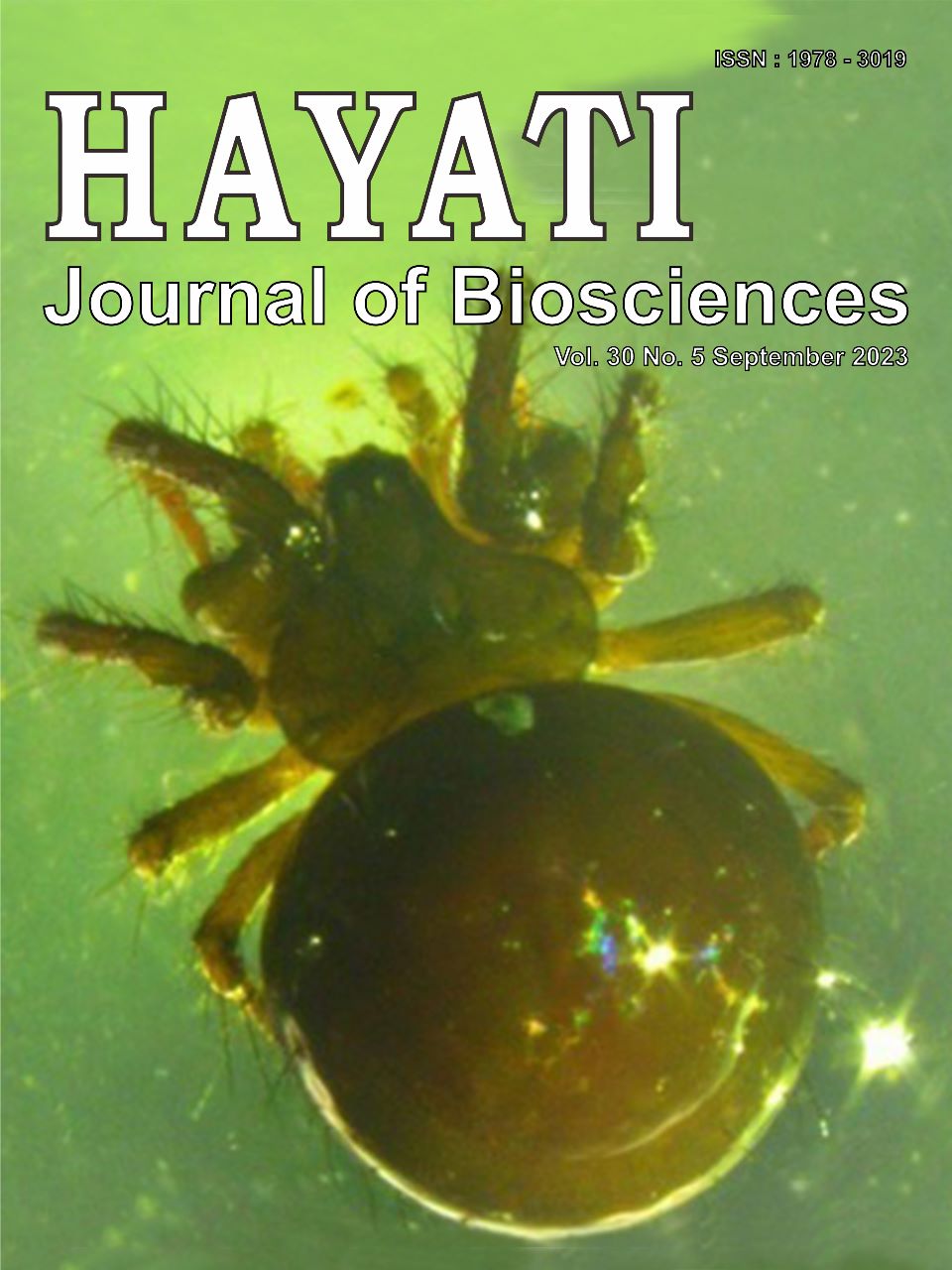Development of Secondary Forest Succession Based on Estimation of Forest Carbon Stocks Ten Years Post-Merapi Volcano Eruption
Abstract
The eruption of the most active volcano in Indonesia, Mount Merapi, has resulted in a very dynamic landscape as a form of ecosystem succession. This study aimed to analyze the carbon stock and vegetation composition in the secondary forest with variations in the level of disturbance after the 2010 eruption of Mount Merapi. Data collection was carried out in January 2020, in which biomass, necromass, and soil organic carbon data were taken in plot transect and Geographic Information Systems carbon stock products compared field data. The results showed that secondary forests at stations A and B with low and medium disturbance levels had carbon stocks in the high category. In contrast, station C at Cangkringan Resort, with high disturbance levels, still had carbon stock with a low category. Furthermore, the comparison of 2020 field data with GIS carbon stock products concluded a similar pattern between carbon stock from aboveground biomass WHRC 2010 and belowground biomass NASA 2010. This research concludes that the disturbance affected forest carbon stocks ten years after the 2010 Merapi eruption. Therefore, monitoring the vegetation community needs to be carried out annually through a combination of spatial and direct checks in the field.
Downloads
Copyright (c) 2023 Inggita Utami, Anjar Dimara Sakti, Febriant Isabella Yusuf, Fahmiatul Husna, Denni Susanto

This work is licensed under a Creative Commons Attribution-NonCommercial 4.0 International License.
HAYATI J Biosci is an open access journal and the article's license is CC-BY-NC. This license lets others distribute, remix, tweak, and build upon author's work, as long as they credit the original creation. Authors retain copyright and grant the journal/publisher non exclusive publishing rights with the work simultaneously licensed under a https://creativecommons.org/

























.png) IPB University
IPB University Department of Biology
Department of Biology The Indonesian Biological Society
The Indonesian Biological Society 

